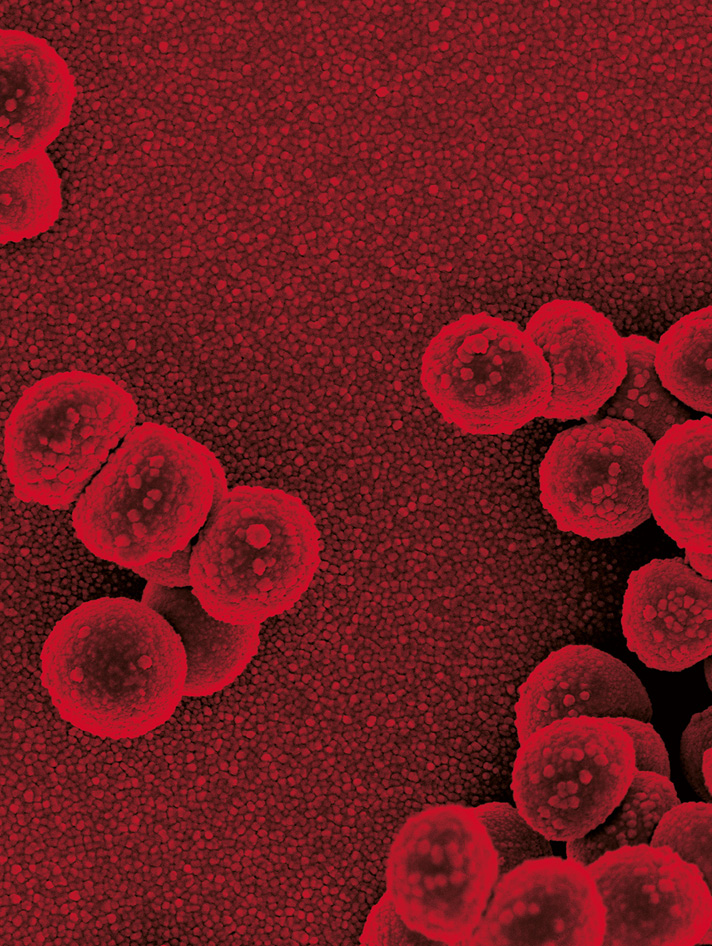 -
Volume 57,
Issue 3,
2008
-
Volume 57,
Issue 3,
2008
Volume 57, Issue 3, 2008
- Case Reports
-
-
-
Co-infection with two different strains of Bordetella pertussis in an infant
More LessWe report co-infection with two phenotypically and genotypically distinct strains of Bordetella pertussis in an infant male hospitalized with a 2-week history of cough, paroxysms and vomiting. Colonies from the two B. pertussis phenotypes were isolated and evaluated by PFGE profile analysis, gene sequence typing and PCR-RFLP of a portion of the 23S rRNA gene. These results demonstrated simultaneous infection with two different strains of B. pertussis.
-
-
-
-
Identification of Acanthamoeba genotype T4 and Paravahlkampfia sp. from two clinical samples
More LessIn this study, two free-living amoebae strains, Acanthamoeba genotype T4 and Paravahlkampfia sp., which were isolated from keratitis cases are presented. While the Acanthamoeba strain was isolated as a single agent, the Paravahlkampfia strain was found together with herpes simplex virus. Neither of the patients were contact lens wearers, but they did have a history of minor corneal trauma. Amoebae were detected on non-nutrient agar covered with Escherichia coli. Based on PCR-amplified 18S rRNA-gene analysis the first isolate was identified as Acanthamoeba genotype T4 and the second as Paravahlkampfia sp. In thermotolerance tests, the maximum temperature at which trophozoites continued to divide was determined as 37 °C for this Acanthamoeba strain and 35 °C for the Paravahlkampfia strain. To the best of our knowledge, the Acanthamoeba strain described herein is the second molecularly identified Acanthamoeba strain in an Acanthamoeba keratitis patient in Turkey. However, the Paravahlkampfia isolate is believed to be the first strain that has been isolated from a keratitis patient and has been molecularly differentiated from Vahlkampfia.
-
- Correspondence
- Erratum
-
Volumes and issues
-
Volume 73 (2024)
-
Volume 72 (2023 - 2024)
-
Volume 71 (2022)
-
Volume 70 (2021)
-
Volume 69 (2020)
-
Volume 68 (2019)
-
Volume 67 (2018)
-
Volume 66 (2017)
-
Volume 65 (2016)
-
Volume 64 (2015)
-
Volume 63 (2014)
-
Volume 62 (2013)
-
Volume 61 (2012)
-
Volume 60 (2011)
-
Volume 59 (2010)
-
Volume 58 (2009)
-
Volume 57 (2008)
-
Volume 56 (2007)
-
Volume 55 (2006)
-
Volume 54 (2005)
-
Volume 53 (2004)
-
Volume 52 (2003)
-
Volume 51 (2002)
-
Volume 50 (2001)
-
Volume 49 (2000)
-
Volume 48 (1999)
-
Volume 47 (1998)
-
Volume 46 (1997)
-
Volume 45 (1996)
-
Volume 44 (1996)
-
Volume 43 (1995)
-
Volume 42 (1995)
-
Volume 41 (1994)
-
Volume 40 (1994)
-
Volume 39 (1993)
-
Volume 38 (1993)
-
Volume 37 (1992)
-
Volume 36 (1992)
-
Volume 35 (1991)
-
Volume 34 (1991)
-
Volume 33 (1990)
-
Volume 32 (1990)
-
Volume 31 (1990)
-
Volume 30 (1989)
-
Volume 29 (1989)
-
Volume 28 (1989)
-
Volume 27 (1988)
-
Volume 26 (1988)
-
Volume 25 (1988)
-
Volume 24 (1987)
-
Volume 23 (1987)
-
Volume 22 (1986)
-
Volume 21 (1986)
-
Volume 20 (1985)
-
Volume 19 (1985)
-
Volume 18 (1984)
-
Volume 17 (1984)
-
Volume 16 (1983)
-
Volume 15 (1982)
-
Volume 14 (1981)
-
Volume 13 (1980)
-
Volume 12 (1979)
-
Volume 11 (1978)
-
Volume 10 (1977)
-
Volume 9 (1976)
-
Volume 8 (1975)
-
Volume 7 (1974)
-
Volume 6 (1973)
-
Volume 5 (1972)
-
Volume 4 (1971)
-
Volume 3 (1970)
-
Volume 2 (1969)
-
Volume 1 (1968)
Most Read This Month


